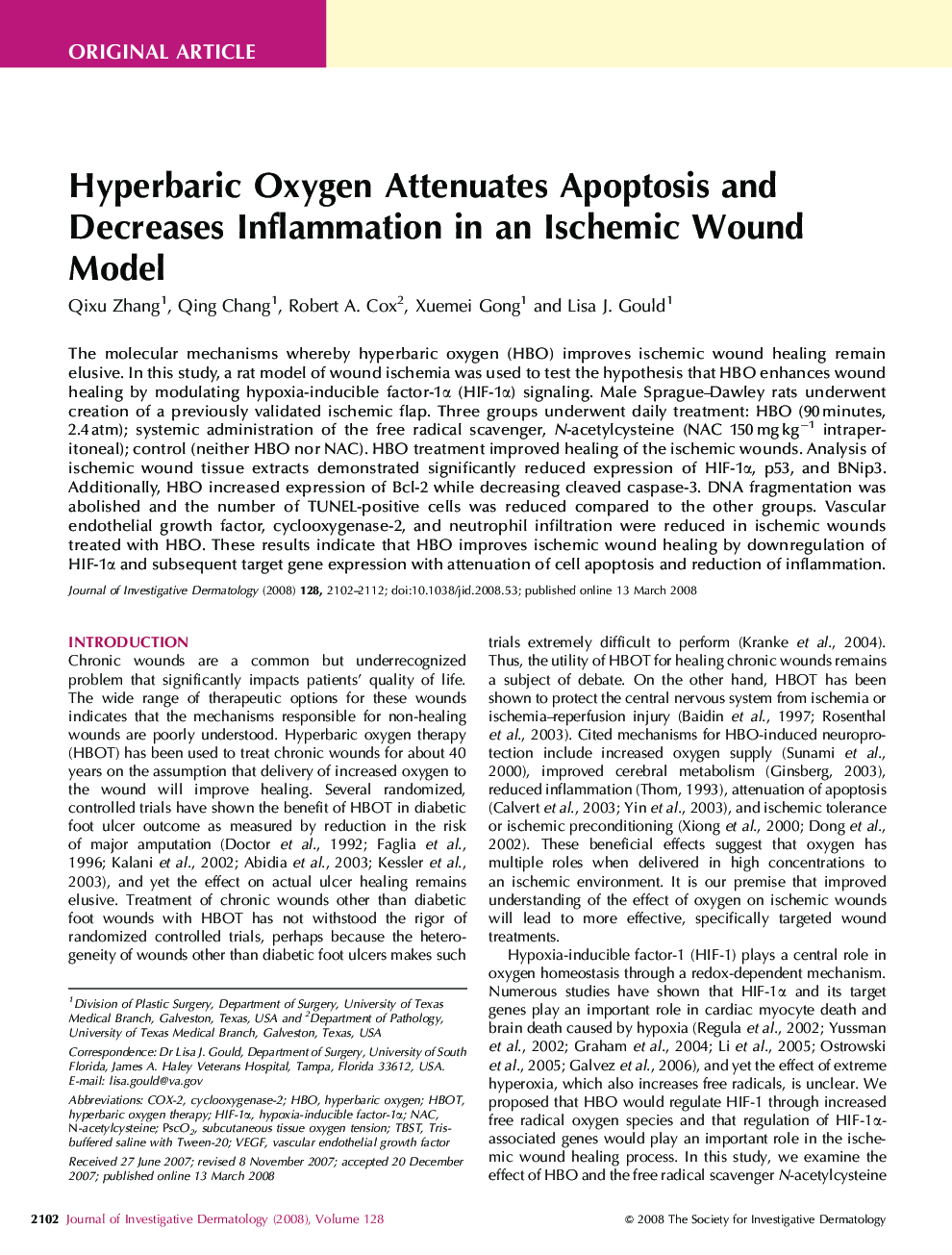| کد مقاله | کد نشریه | سال انتشار | مقاله انگلیسی | نسخه تمام متن |
|---|---|---|---|---|
| 3217515 | 1203603 | 2008 | 11 صفحه PDF | دانلود رایگان |

The molecular mechanisms whereby hyperbaric oxygen (HBO) improves ischemic wound healing remain elusive. In this study, a rat model of wound ischemia was used to test the hypothesis that HBO enhances wound healing by modulating hypoxia-inducible factor-1α (HIF-1α) signaling. Male Sprague–Dawley rats underwent creation of a previously validated ischemic flap. Three groups underwent daily treatment: HBO (90 minutes, 2.4 atm); systemic administration of the free radical scavenger, N-acetylcysteine (NAC 150 mg kg−1 intraperitoneal); control (neither HBO nor NAC). HBO treatment improved healing of the ischemic wounds. Analysis of ischemic wound tissue extracts demonstrated significantly reduced expression of HIF-1α, p53, and BNip3. Additionally, HBO increased expression of Bcl-2 while decreasing cleaved caspase-3. DNA fragmentation was abolished and the number of TUNEL-positive cells was reduced compared to the other groups. Vascular endothelial growth factor, cyclooxygenase-2, and neutrophil infiltration were reduced in ischemic wounds treated with HBO. These results indicate that HBO improves ischemic wound healing by downregulation of HIF-1α and subsequent target gene expression with attenuation of cell apoptosis and reduction of inflammation.
Journal: Journal of Investigative Dermatology - Volume 128, Issue 8, August 2008, Pages 2102–2112